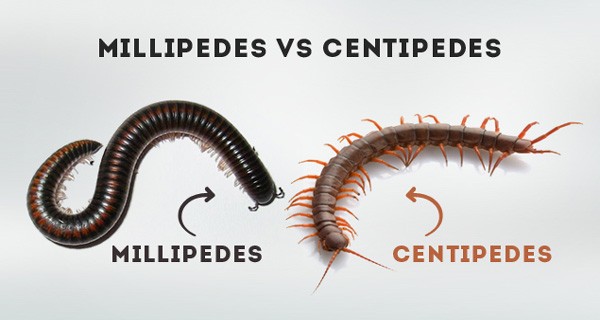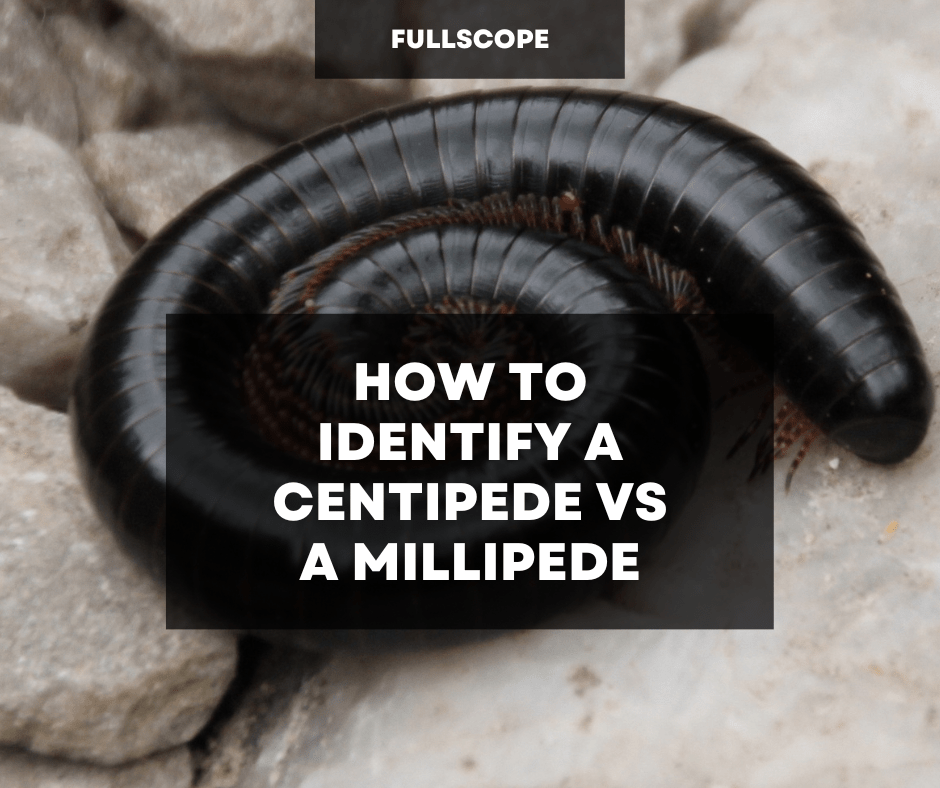Centipedes and millipedes are both arthropods with long bodies and a plethora of legs. However, it is about all they have in common.
If you’re thinking to yourself, “But wait! “They’re both venomous!” you’ll be astonished to hear that only one of these lanky critters is poisonous. You can find out which arthropods are venomous by reading on. There are also significant differences between centipedes and millipedes.

Centipede Distinctions
Centipedes are chilopoda. Unlike a millipede, a centipede has only one set of legs (two legs total).
Many people assume centipedes have 100 legs since the word centi means “one hundred.” They have 30 to 354 legs. No centipede has an odd number of leg sets. There are no naturally occurring 100-legged centipedes.
Depending on the species, centipedes can be one to twelve inches long. Their antennae are long. Centipedes are carnivores with large jaws to kill or paralyze prey.
Millipede Distinctions
Diplopoda are millipedes. Each body segment has two legs (four legs total). Do not forget the one pair of legs for each centipede segment. This is the main distinction.
Millipedes also have shorter antennae and no deadly jaws. Unlike centipedes, millipedes eat decaying organic matter like leaves and compost.
Some say millipedes have a thousand legs. The prefix milli- signifies “a thousand,” thus it makes sense. However, millipede species differ in their leg count. Illacme pipes, for example, has the most legs. Surprisingly, it only has 750, around 250 short of a thousand.
Types of Centipedes
This arthropod has more species than centipedes with the longest legs. Meet three of the numerous.
House Centipedes
You’ll be relieved to learn that house centipedes aren’t dangerous. They can help around the house because they enjoy eating spiders and insects. They’re not exactly easy on the eyes, but their long legs help them stand out.
Amazonian Huge Centipedes
These centipedes are among the largest, yet only found in South America. Amazonian giant centipedes are very aggressive and can grow over a foot long.
Texas Redheaded Centipedes
This species is named by its vivid redhead and can grow to be up to 8 inches long. Texas redheaded centipedes can be found in Texas and other southern regions. It is also found in portions of Mexico. The centipede’s distinctive coloring — a redhead, brilliant yellow legs, and a black body – warns predators to keep away.
Must Read:DOES HEAT KILL BED BUGS AND OTHER PEST?
Millipedes come in a variety of sizes, shapes, and colors. Let’s have a look at some of the fascinating millipedes on the planet.
Giant African Millipedes
The term “giant” refers to the size of these millipedes. A 15-inch long and 3-inch-diameter worm, The African millipede has only 256 legs.
Pink Dragon Millipedes
One of the most elaborate millipede species is the stunning pink dragon millipede. It uses spines and bright colors to warn predators that it is poisonous. Surprisingly, it smells like nuts.
Cave Millipedes
Millipedes prefer chilly, damp environments. Few places better fit that description than a cave. These millipedes can be found in caverns all around the United States. Millipedes that live in caves vary greatly from cave to cave. Furthermore, most have acclimated to their surroundings and are blind and ghostly pale.
If millipedes or centipedes are abundant or causing difficulties, spraying pesticide around the foundation and around doors and windows will provide temporary control. If you need professional help, contact FullScope Pest Control! We can help you remove these types of pests in your home or business.




